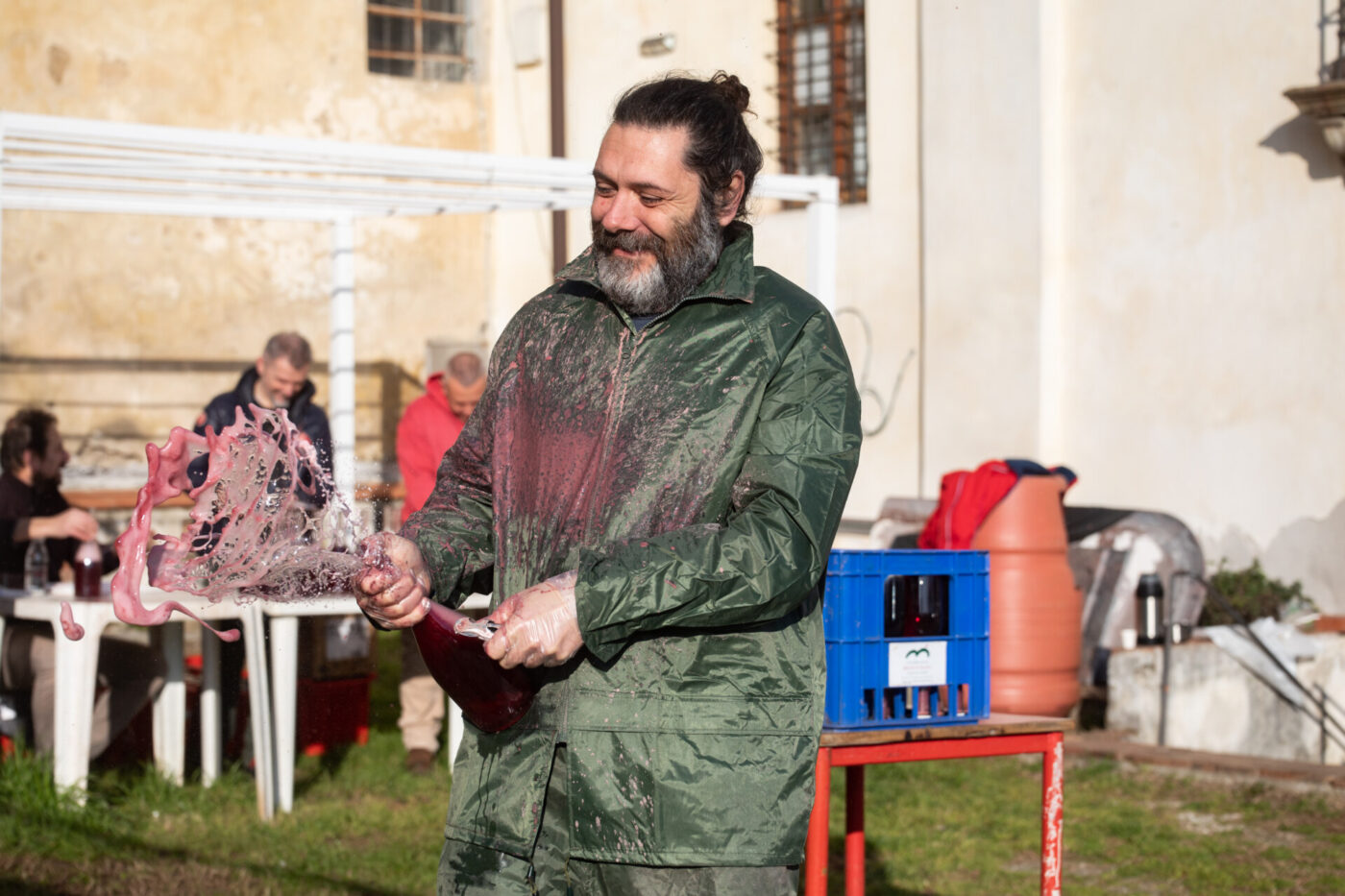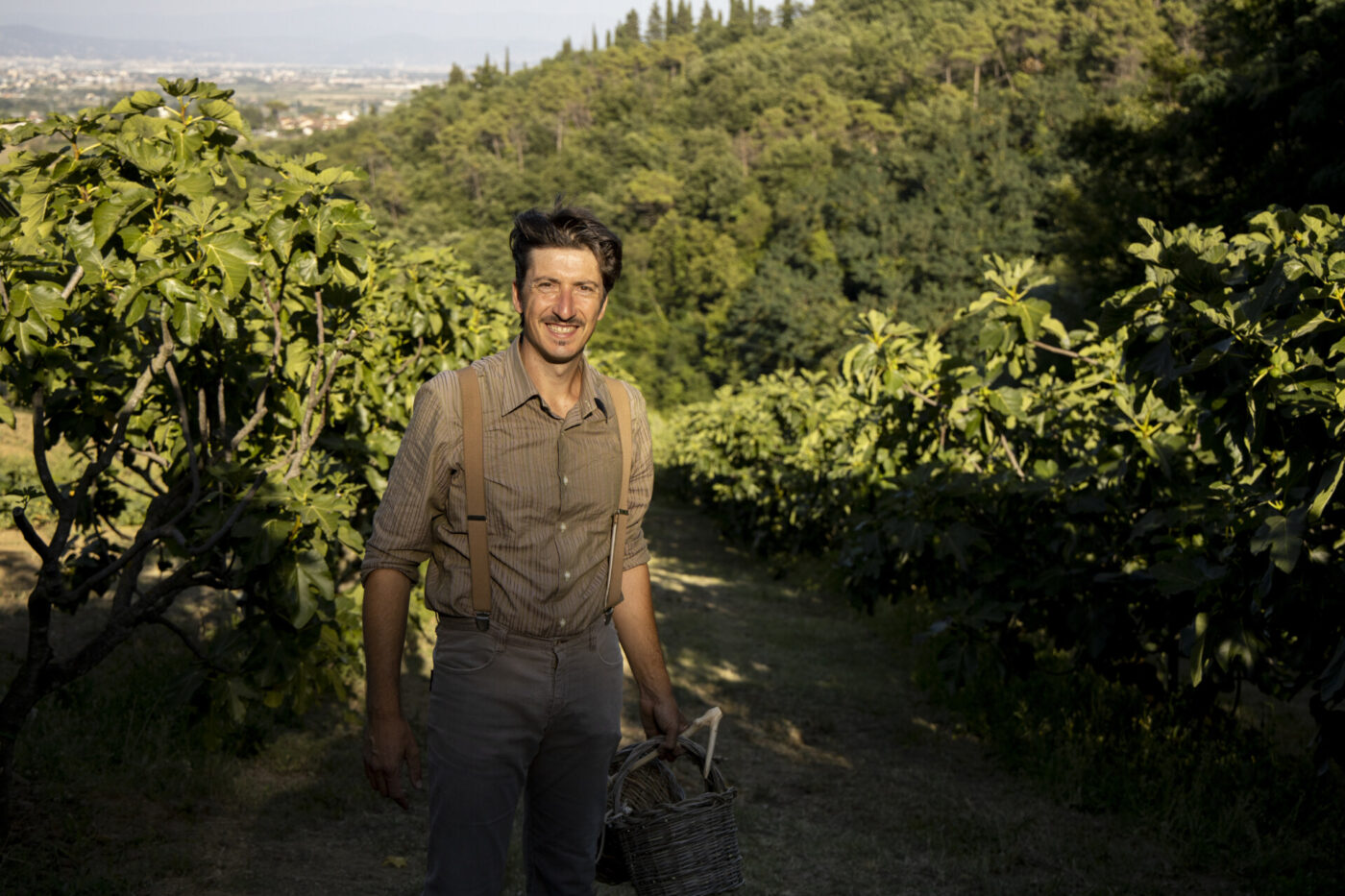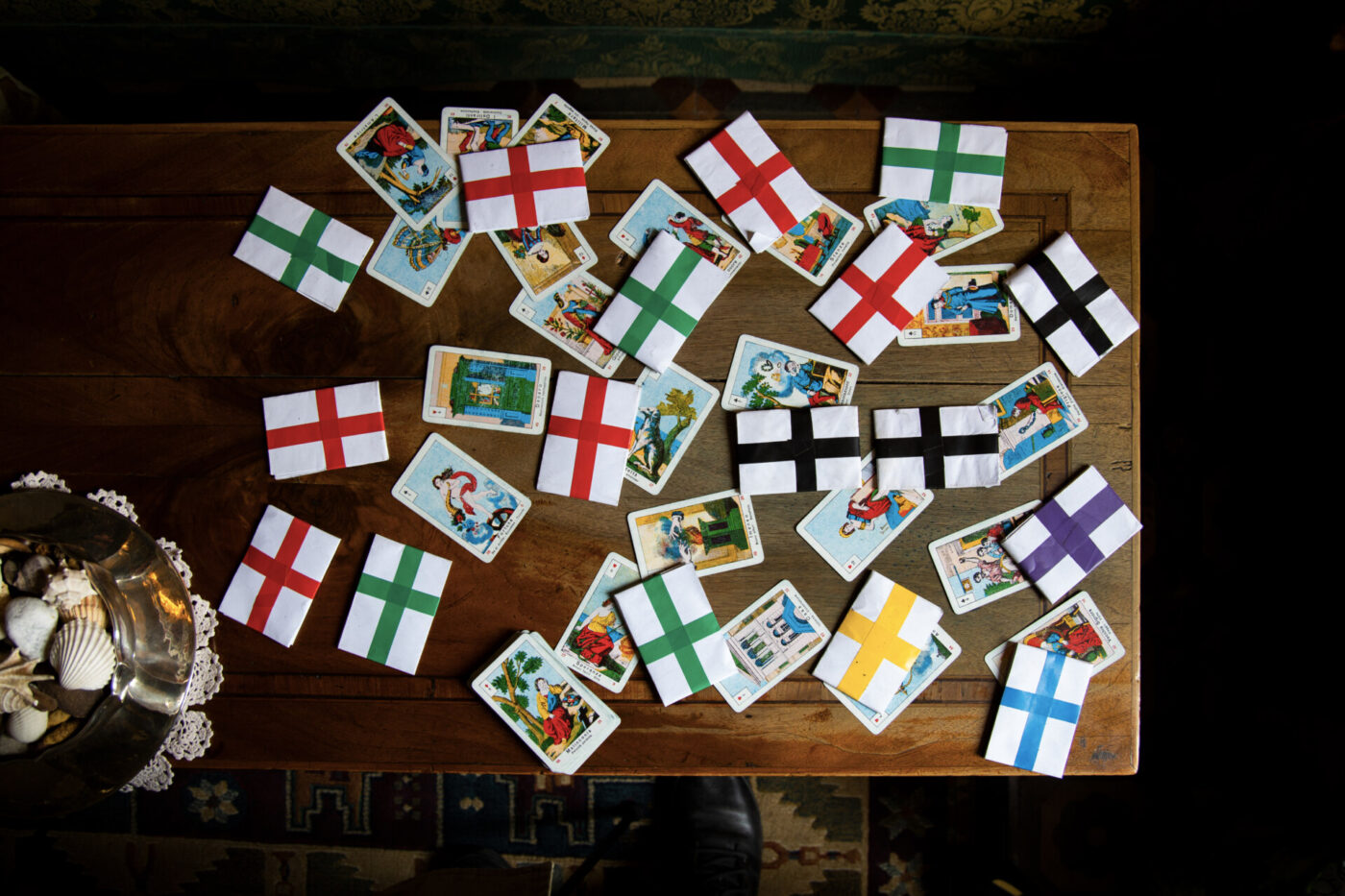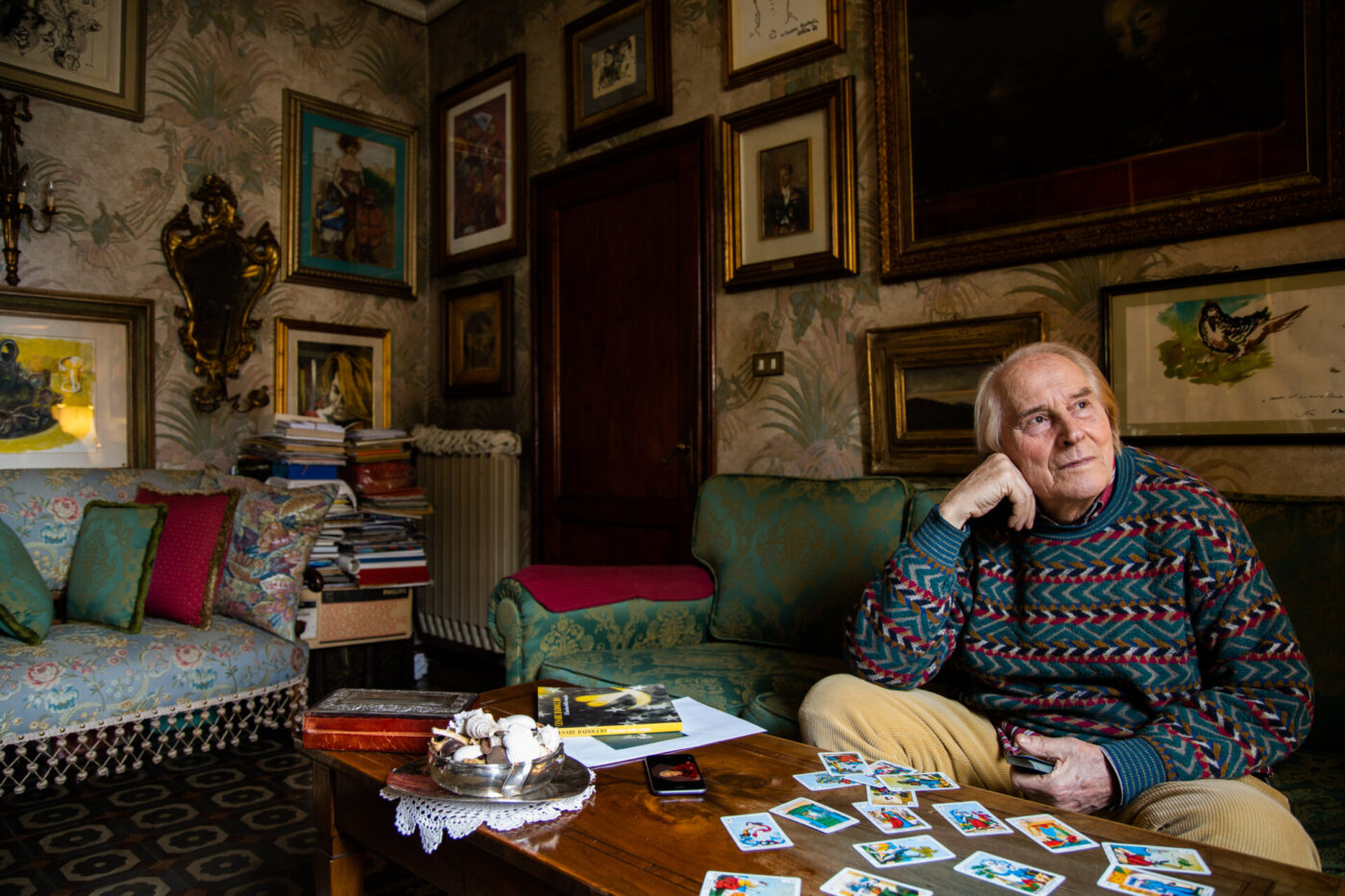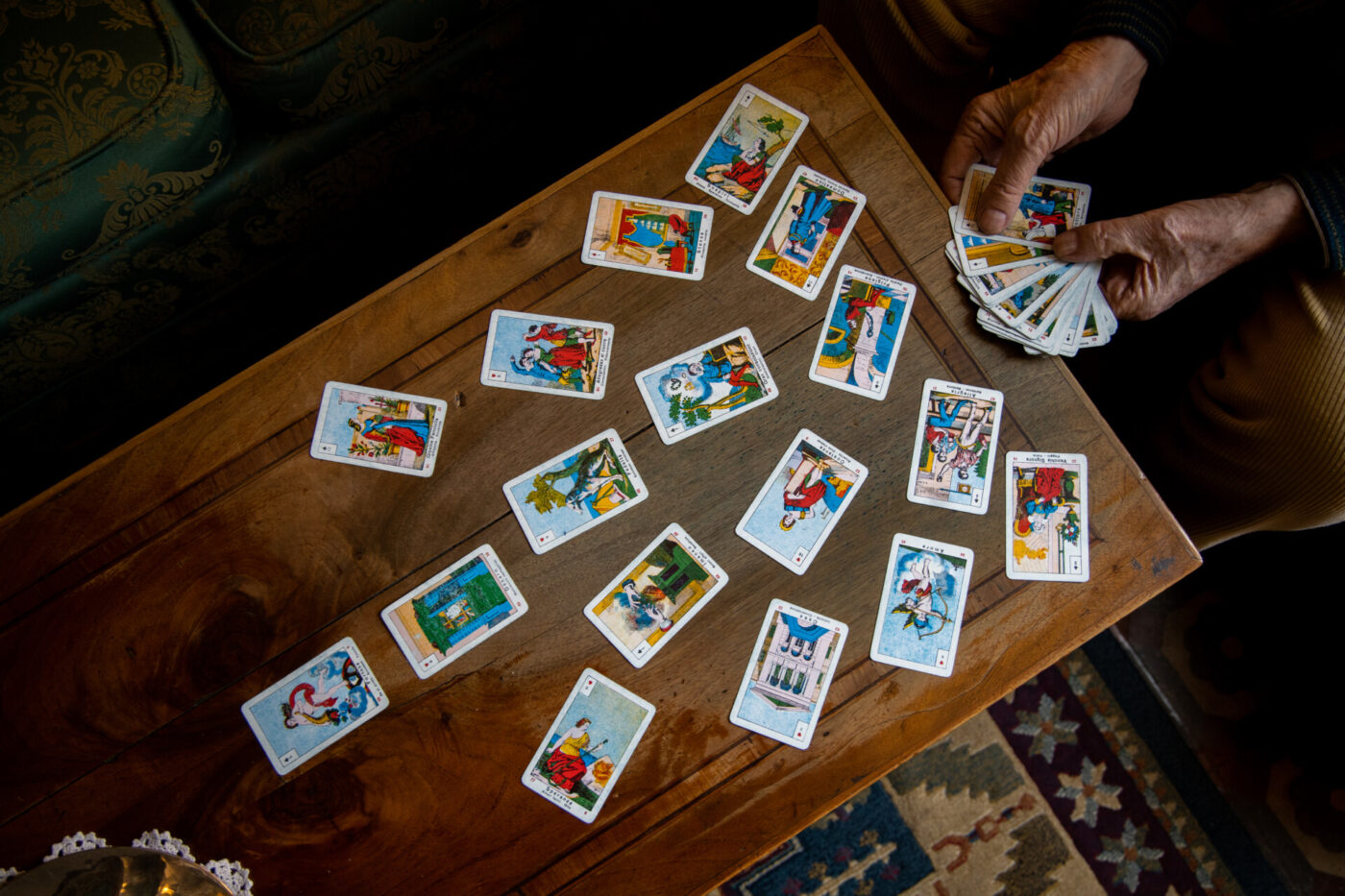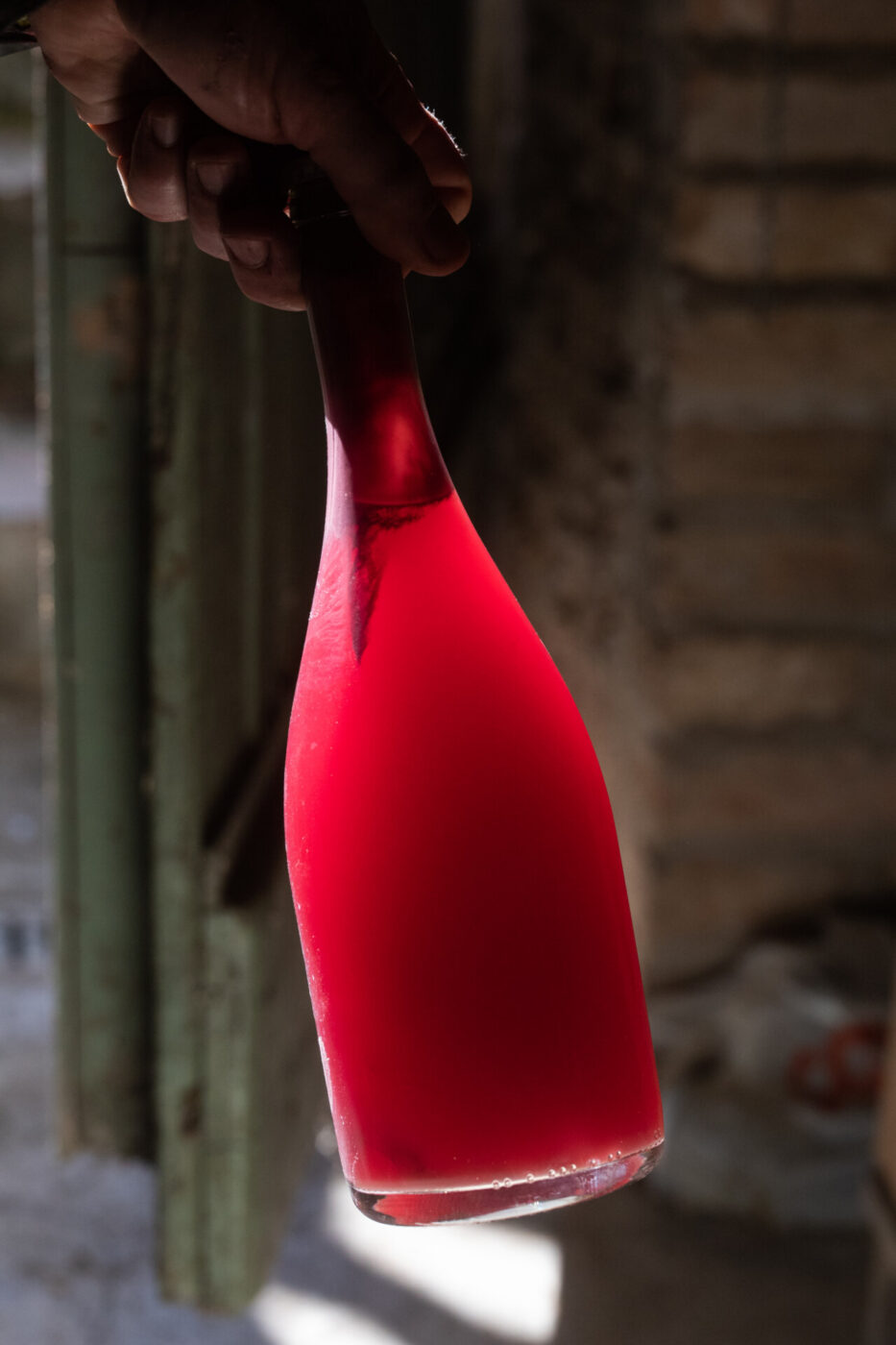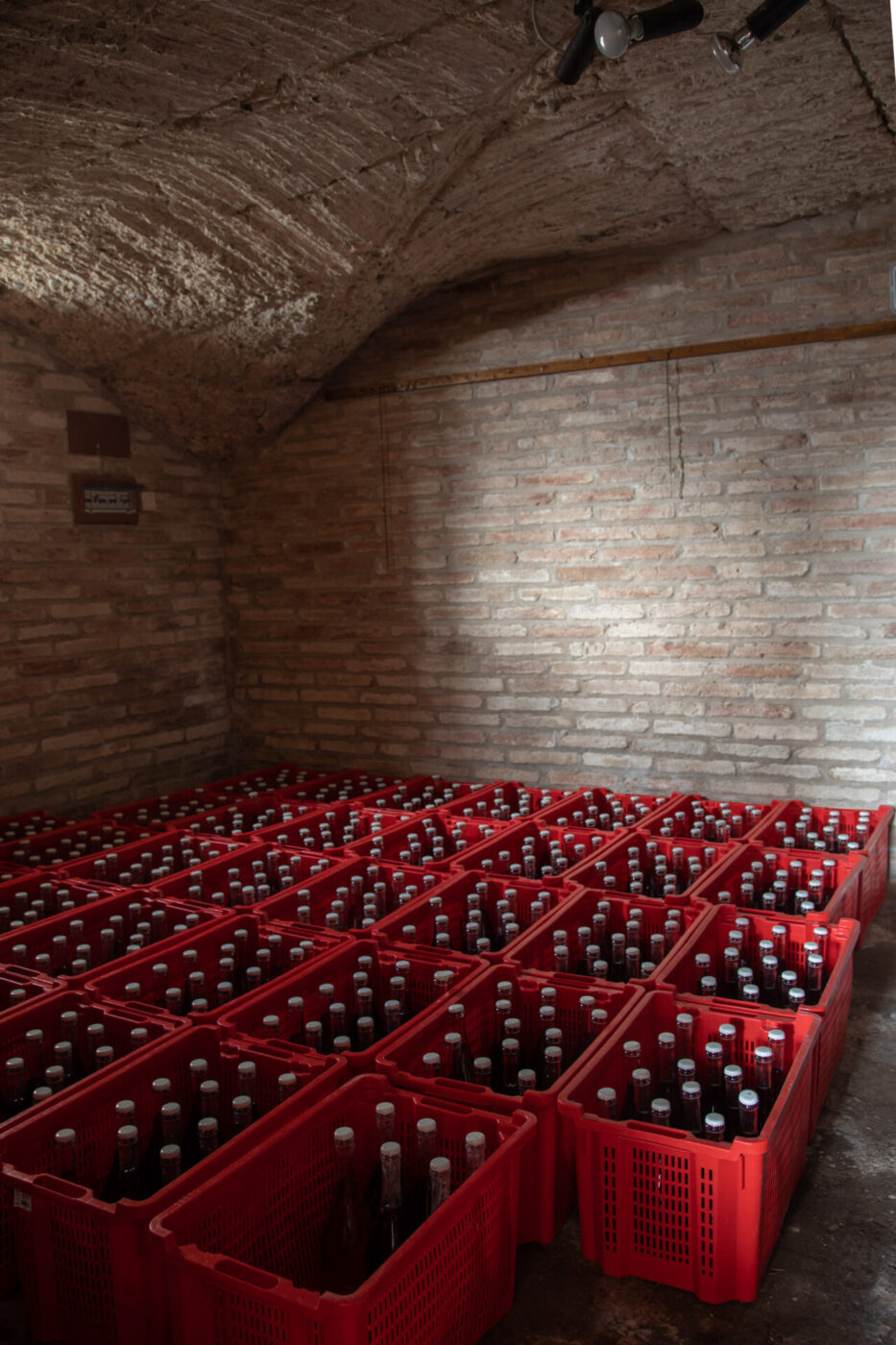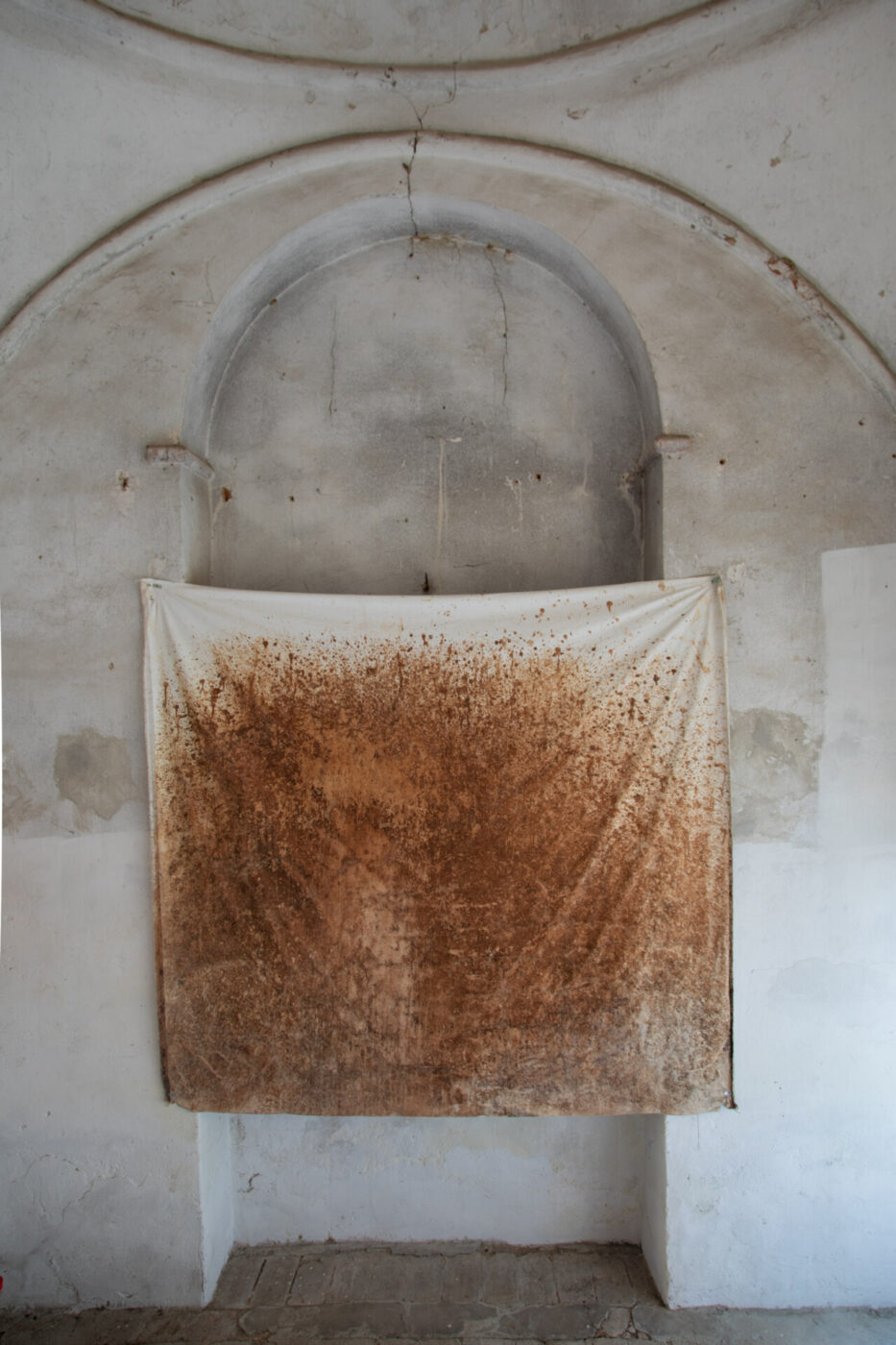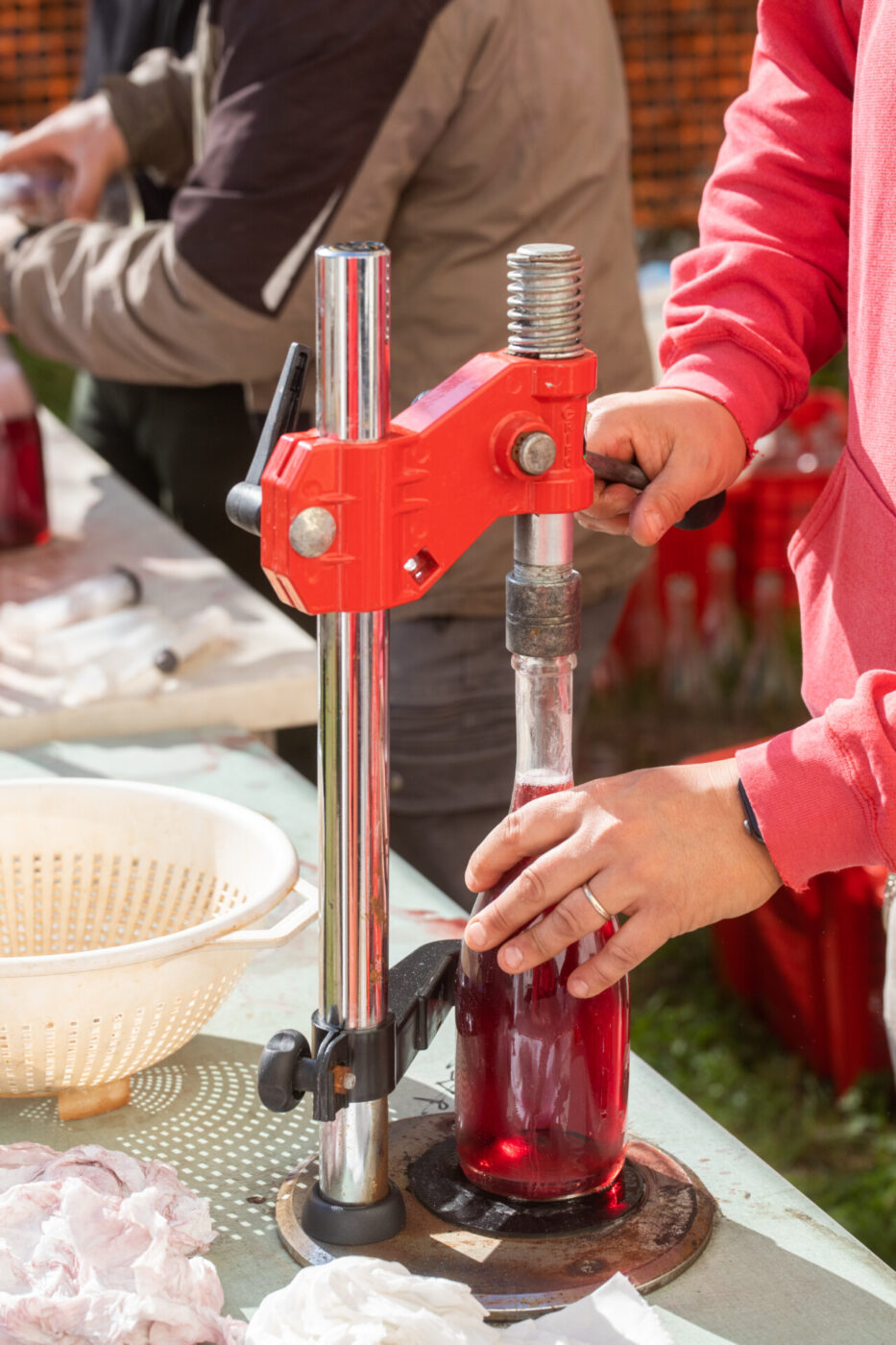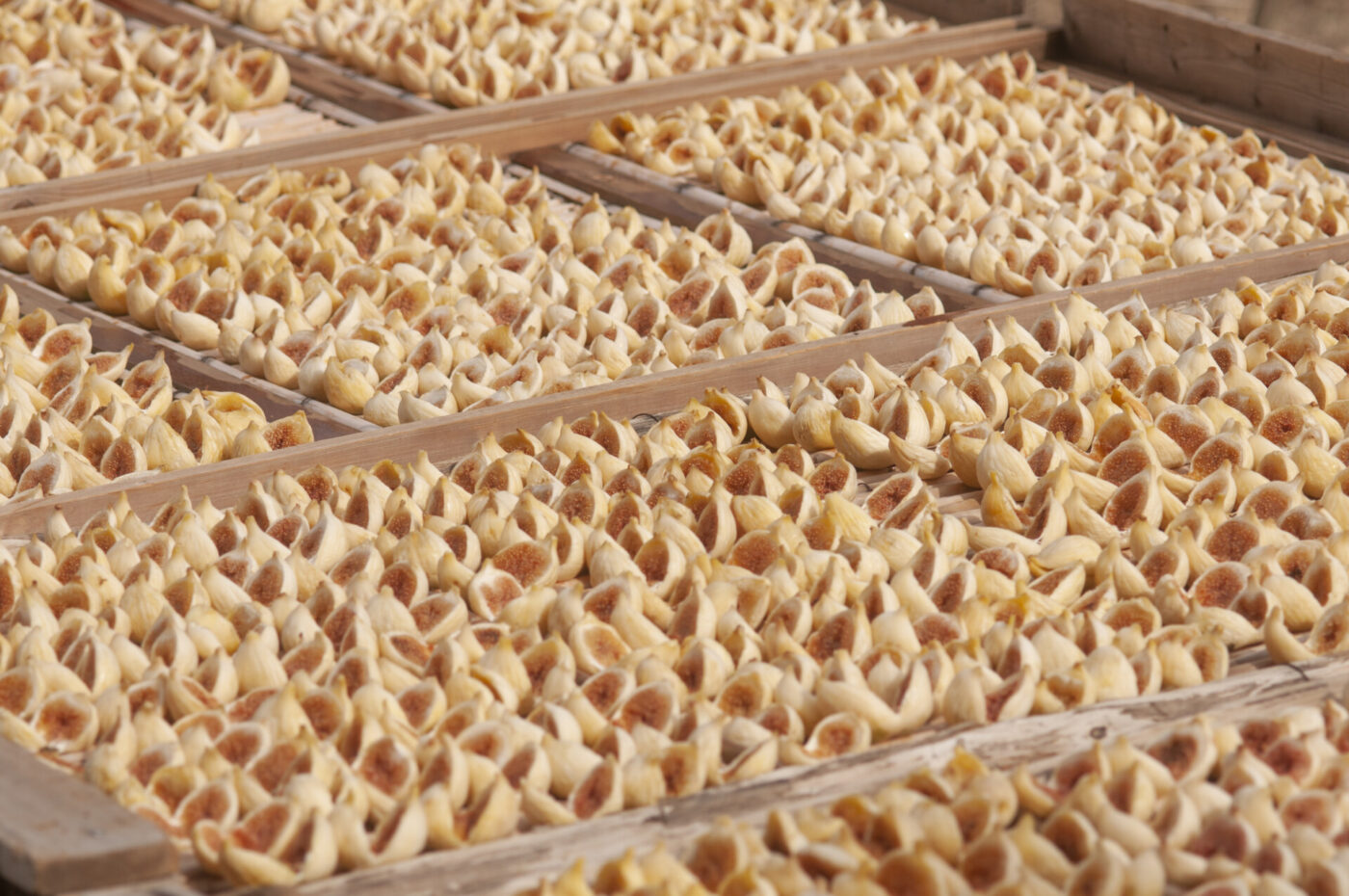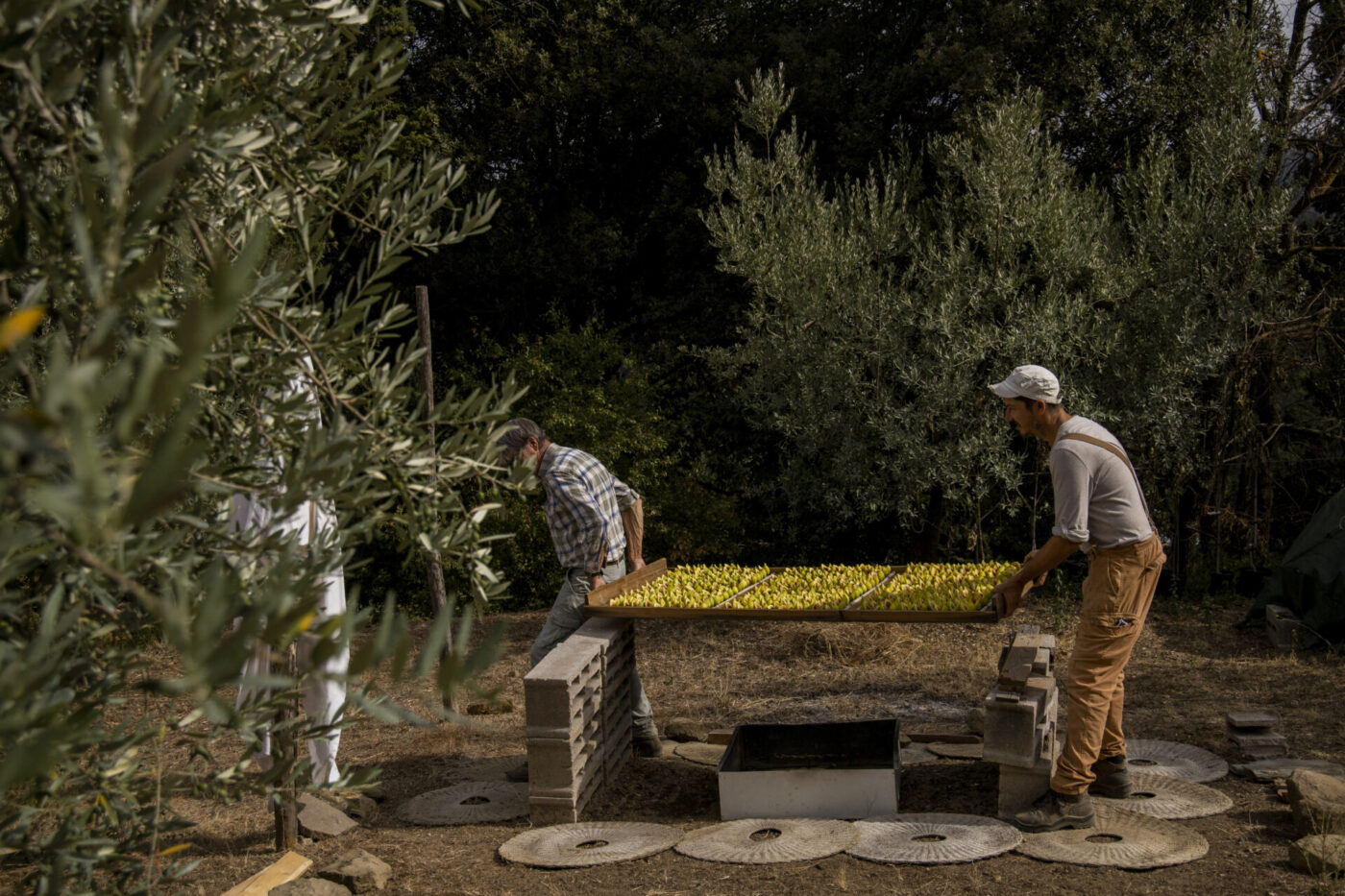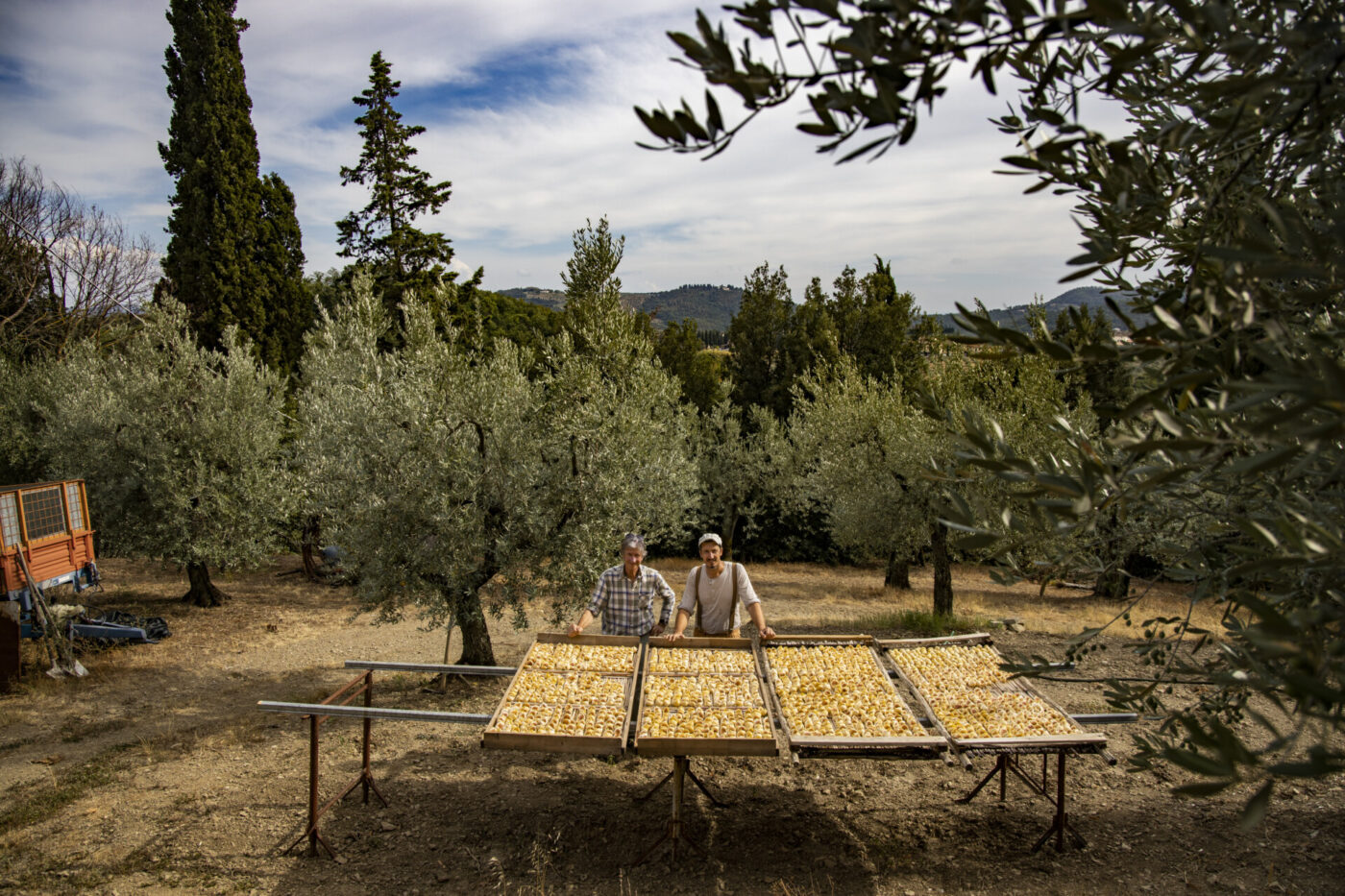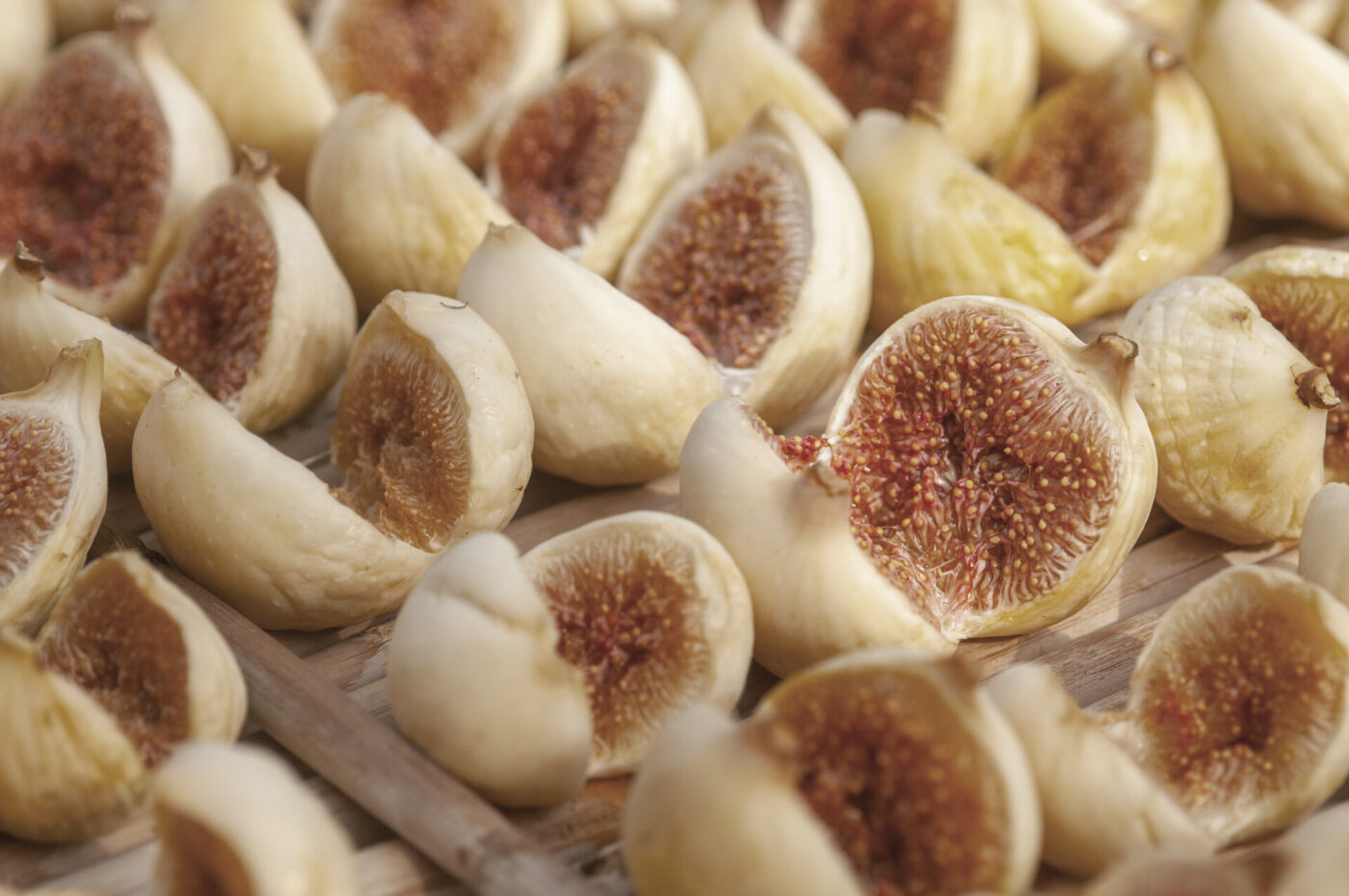We don’t know anyone with a more interesting rolodex than photographer Dario Garofalo. A Tuscan local himself, Dario has spent years exploring the nooks and crannies of the hilly region and meeting the personalities that call the region home; it is these people he celebrates with his photographic project on “local heroes”. Drawn to people who lead “eccentric and eclectic lifestyles”, Dario tells Italy Segreta his work is “an intimate vision that reminds us that, fortunately, we are not all the same and homogeneous.”
Dario studied Sociology in university, so it’s no surprise that anthropological and journalistic research has always been a part of his work, though he tells us he’s primarily driven by his curiosity and his deep desire to get to know the people of Tuscany. He spends the time–sometimes years–to visit each person at home, listen to their stories, and earn their trust–and, often, friendship. “The resulting relationship is very precious,” he echoes. “The photograph is just what emerges, but the meaning goes much deeper.”
In an era of hit-and-run social media content, it’s refreshing to see such a deep bond between photographer and subject–a bond that, at the end of the day, brings to light what lies below the surface stereotype of beloved Tuscany. “Many people have a personal economic gain in keeping this stereotype alive, so the identity and particularity of a region that still has mystery and charm is lost,” he asserts, continuing that he, rather, is attracted to “the Tuscany of small towns and rituals, the legacy of the heritage that, over the centuries, has passed on to the people who, often unknowingly, are its custodians.”
Here, three such “custodians”, as photographed by Dario, who show what it really means to be a Tuscan local:

Cesare Chiti (Mago Badoglio)
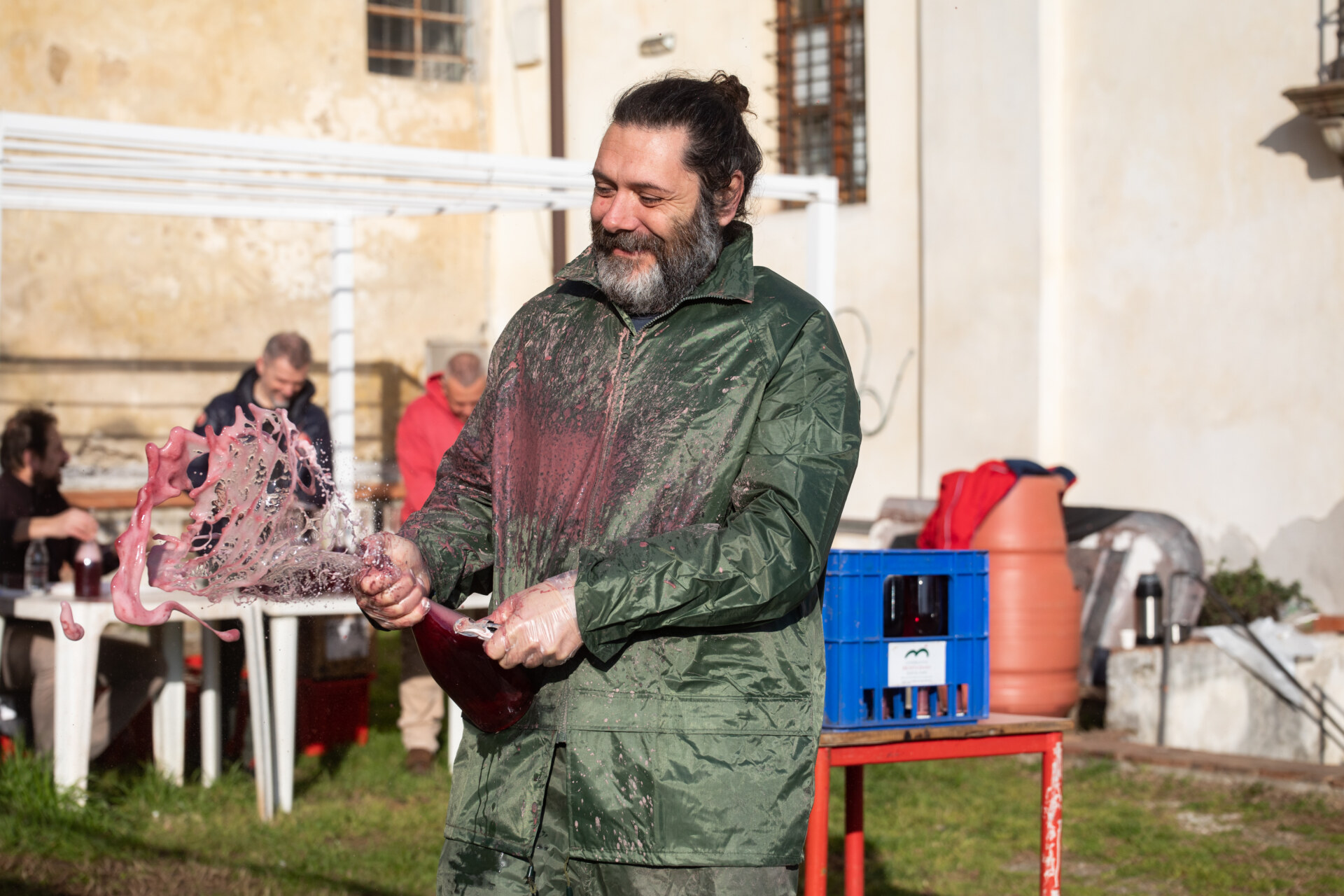
VUM
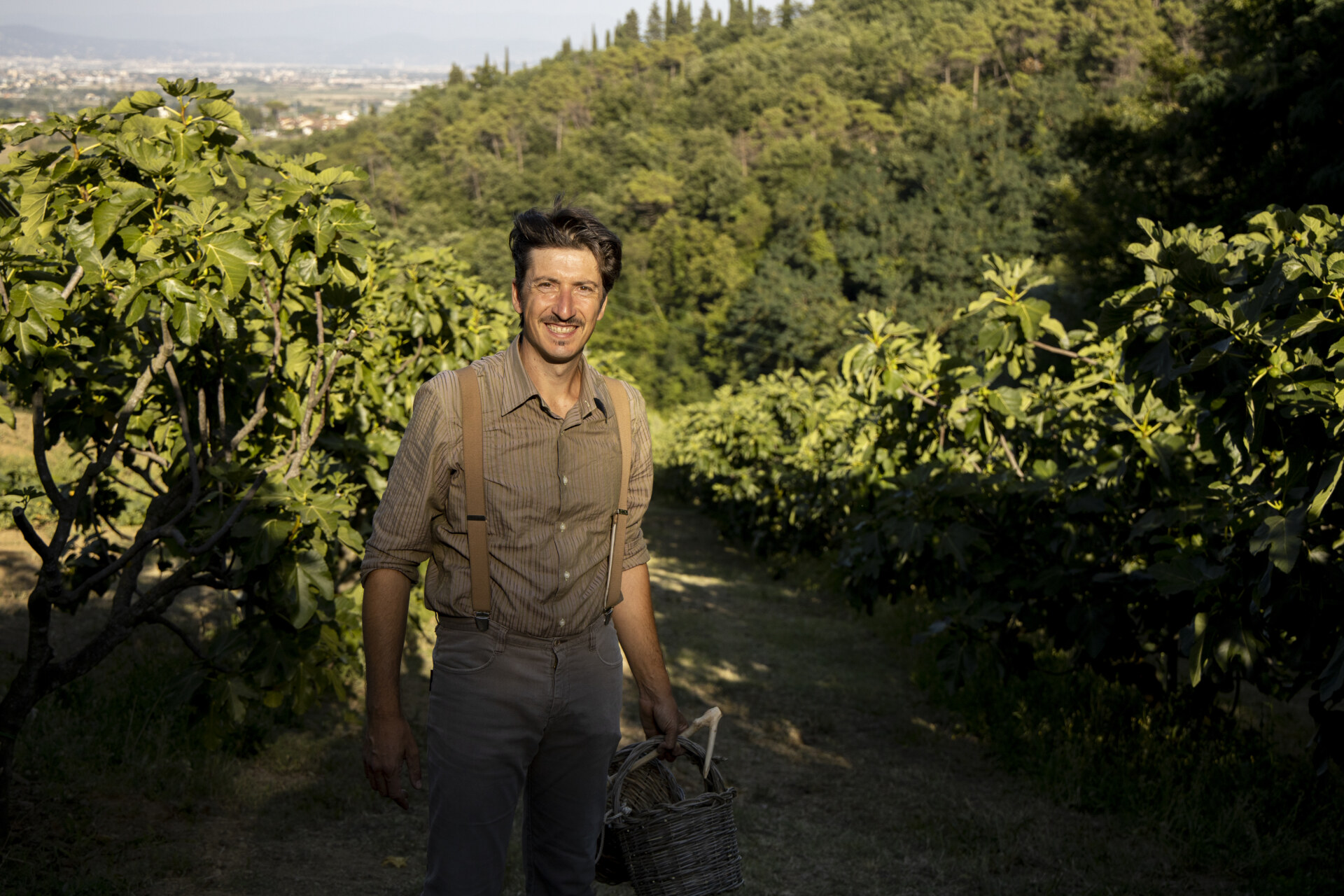
Siro Petracchi
Cesare Chiti (Mago Badoglio):
The door to his house is always open–and more than a few notable figures have walked through it. Sophia Loren, Cher, Sting, Liza Minnelli, and the Dalai Lama, to name but a few. They come to ask about work and love, life and self, for Cesare Chiti–and his tarot cards–are known to predict the future.
Though he worked first as a women’s hairdresser, Chiti encountered magic during his teenage years in his hometown of Prato, a 200,000-large city just north of Florence. “[My friend and I] would gaze at the landscape from a hill, and I was struck by some huts belonging to the Sinti and Romani people. I began visiting the camp out of curiosity, wanting to meet the queen of the tribe. With the lady, we traveled to the former Yugoslavia to seek spirit guides,” he recounts. “Upon returning to Prato, I found that my sister was going to Donna Origile and Donna Maria to have her cards read. I was immediately intrigued, and, thanks to my calling, I was quickly hired by the ladies and became part of the staff. They gave me a room, and it was my first studio, my first atelier.”
Now, he operates out of his home in Prato, as well as an apartment in Florence, which was gifted to him by a client from one of the city’s aristocratic families. A session costs 30 euros, though the fee is voluntary. “I’m the most affordable in Italy!” Cesare asserts. “It begins with an in-person consultation, but the real work is done afterward, in the places of spirituality that I have discovered over the years and that inspire me to resolve cases.”
We ask if anything surprising has ever happened during a session. “No, never,” he responds.
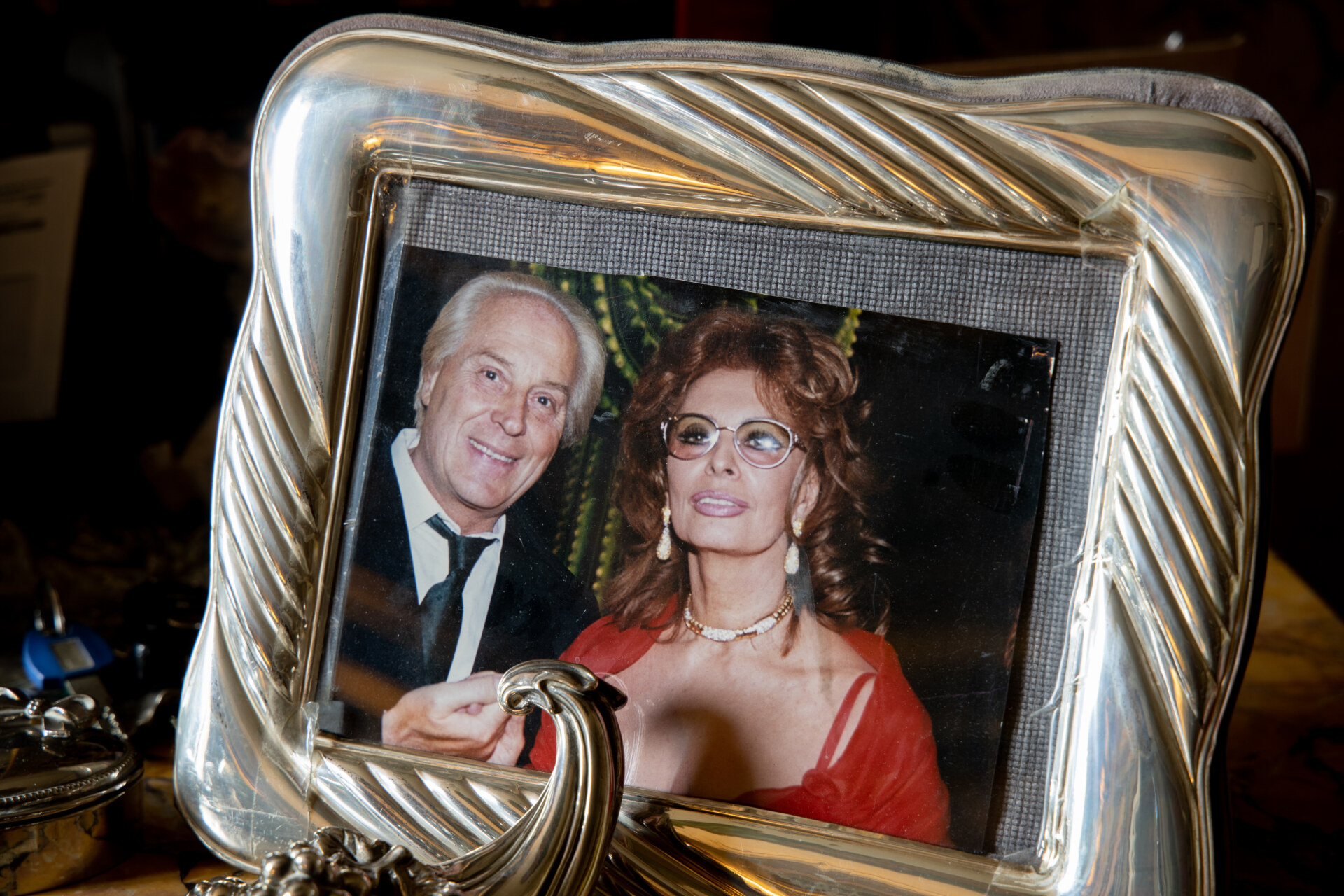
Mago Badoglio and Sophia Loren
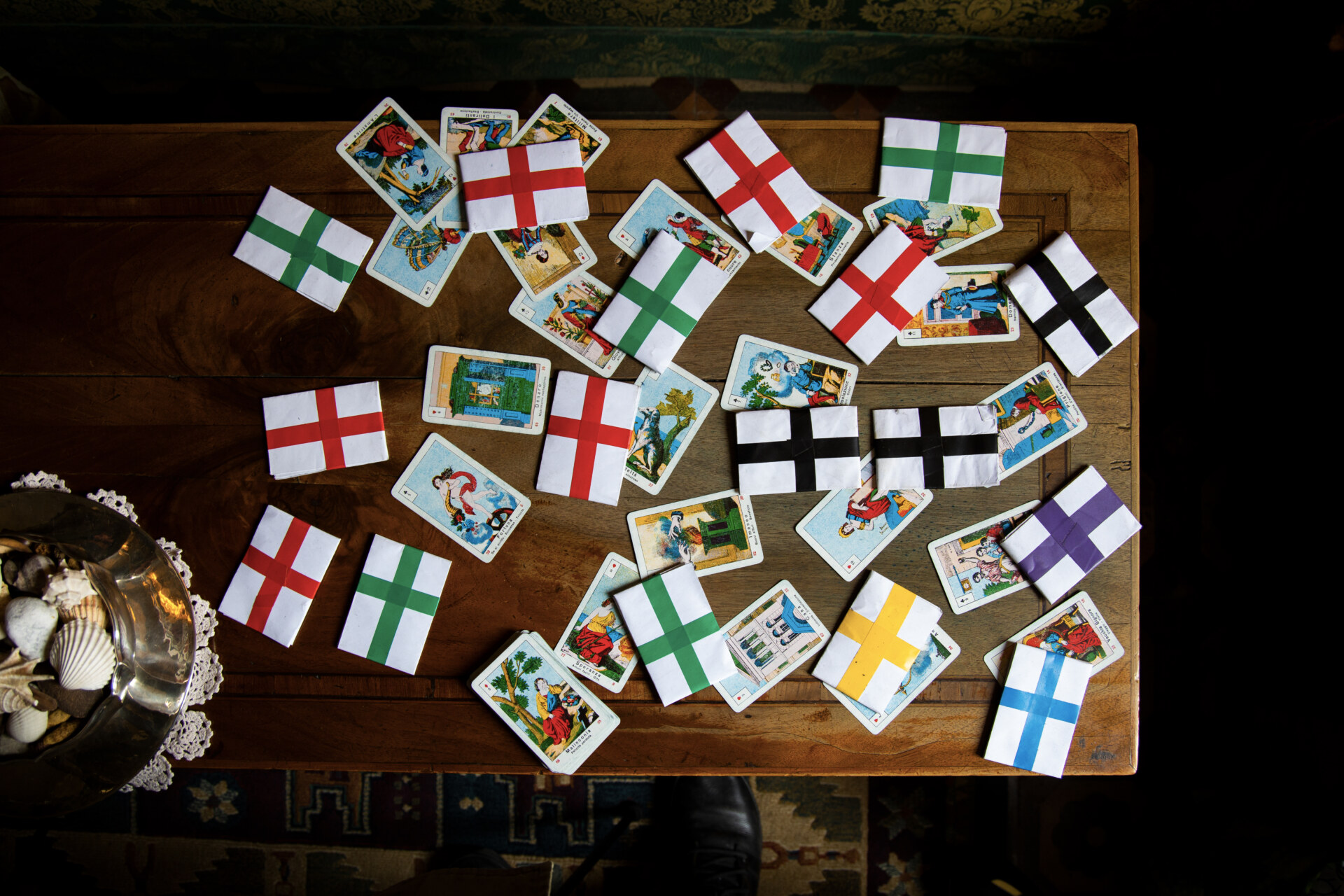

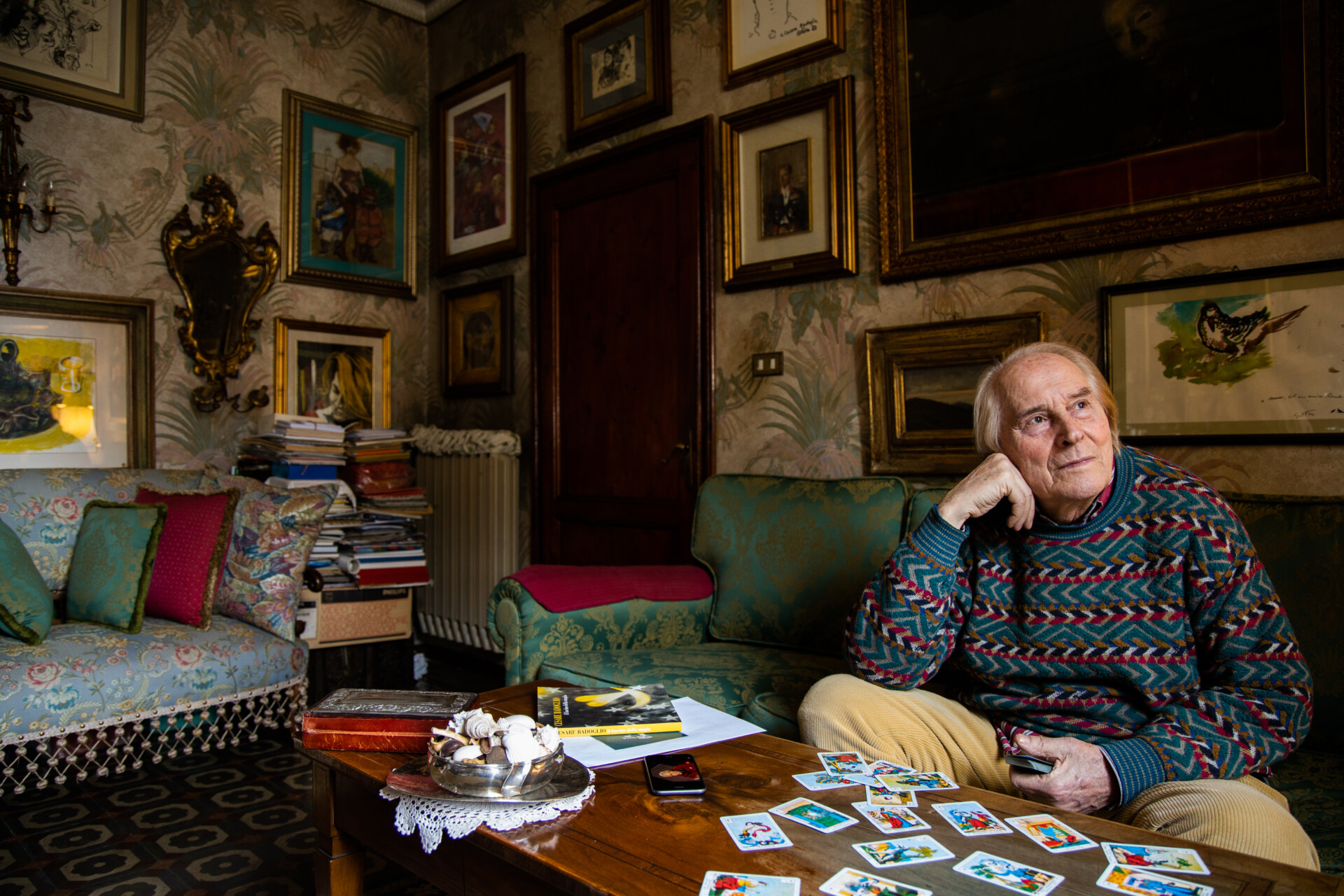
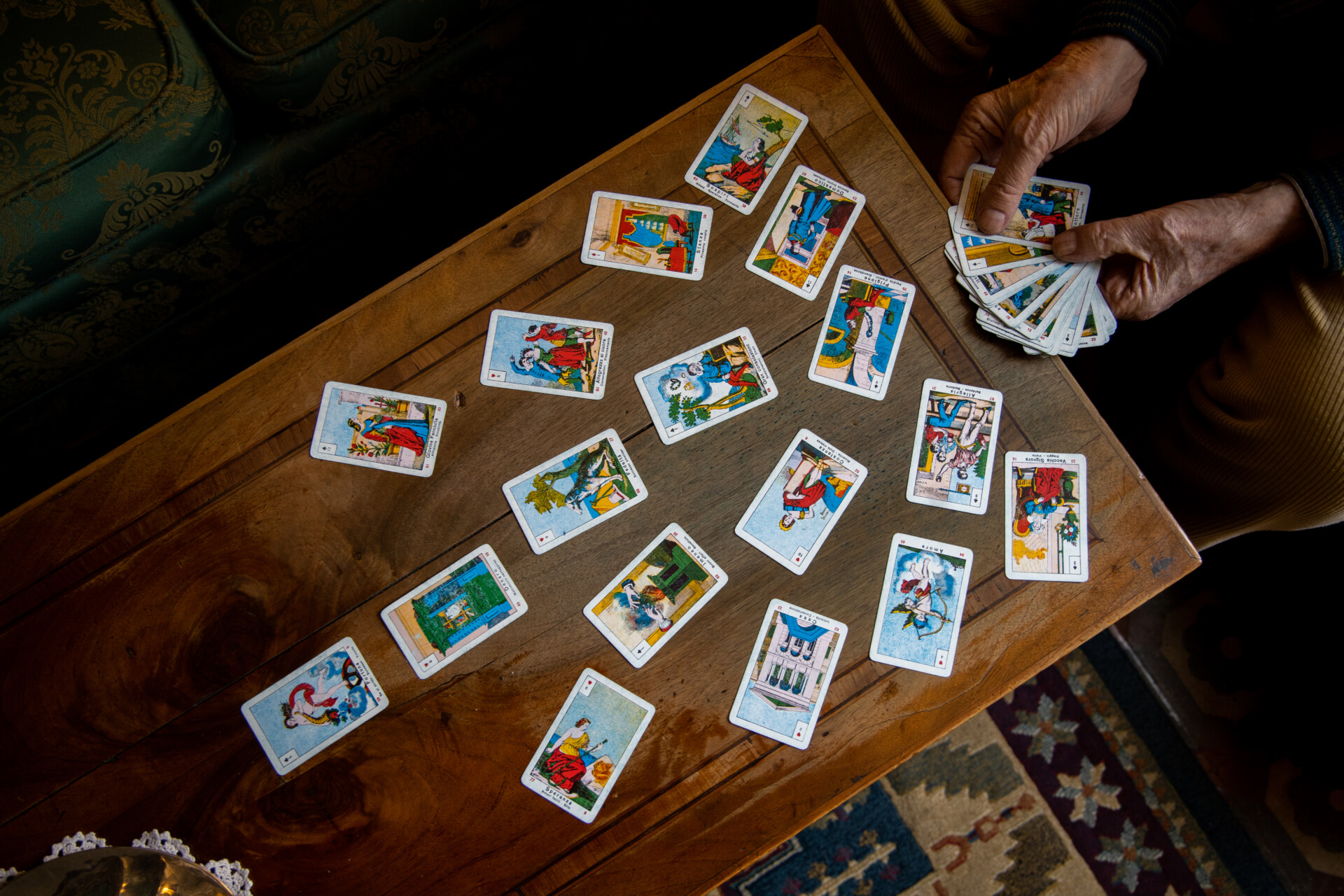
VUM:
It was 2017 when four friends–Simone Chiaramonti, Sandro Alfaroli, Matteo Aquilini, and Roberto Giannetti–noticed an abandoned vineyard, part of a church, in the city center of their hometown Empoli, and, with the permission of the priest, reclaimed the vines and nursed them back to health. Now under the moniker VUM–short for Vignaioli Urbani Mistici, or Mystical Urban–the group produces 1,000 to 2,000 bottles per year of sparkling white wine and rosé in the tiny half-hectare plot, delimited by a stone wall like a French clos. (“The wines have a rather robust structure,” Vum tells us, “with hints of grapefruit and bread crust, fine and persistent bubbles.”)
Thought to produce vinsanto by the parish, the vineyards are between 80 and 100 years old and now produce various native grape varieties, among them Sangiovese, San Colombano, Trebbiano, and Malvasia–to be turned into wine according to ancestral methods. “The return to tradition is not a choice but a necessity driven by the lack of technological tools,” Vum explains. “The Vum family doesn’t have a tractor; our means is a lawnmower, and everything else is done by hand, in an artisanal manner.” But here, they’ve also brought back a tradition even more special, that of “degorgement alla volè.”
Vum elaborates, “The bottles are placed upside down in tubs with water on the coldest night of February to freeze the neck before being opened the next morning—exactly as in the ancient French clos where champagne originated.” When they’re opened–“on Sunday mornings when, on the other side of the convent, there is mass”–there’s an explosion of yeast and wine, immortalized on a white tarpaulin. The result is Pollock-esque pieces of art, which form their own gallery in the monastery chapel: “they decorate the space where we organize our dinners.”

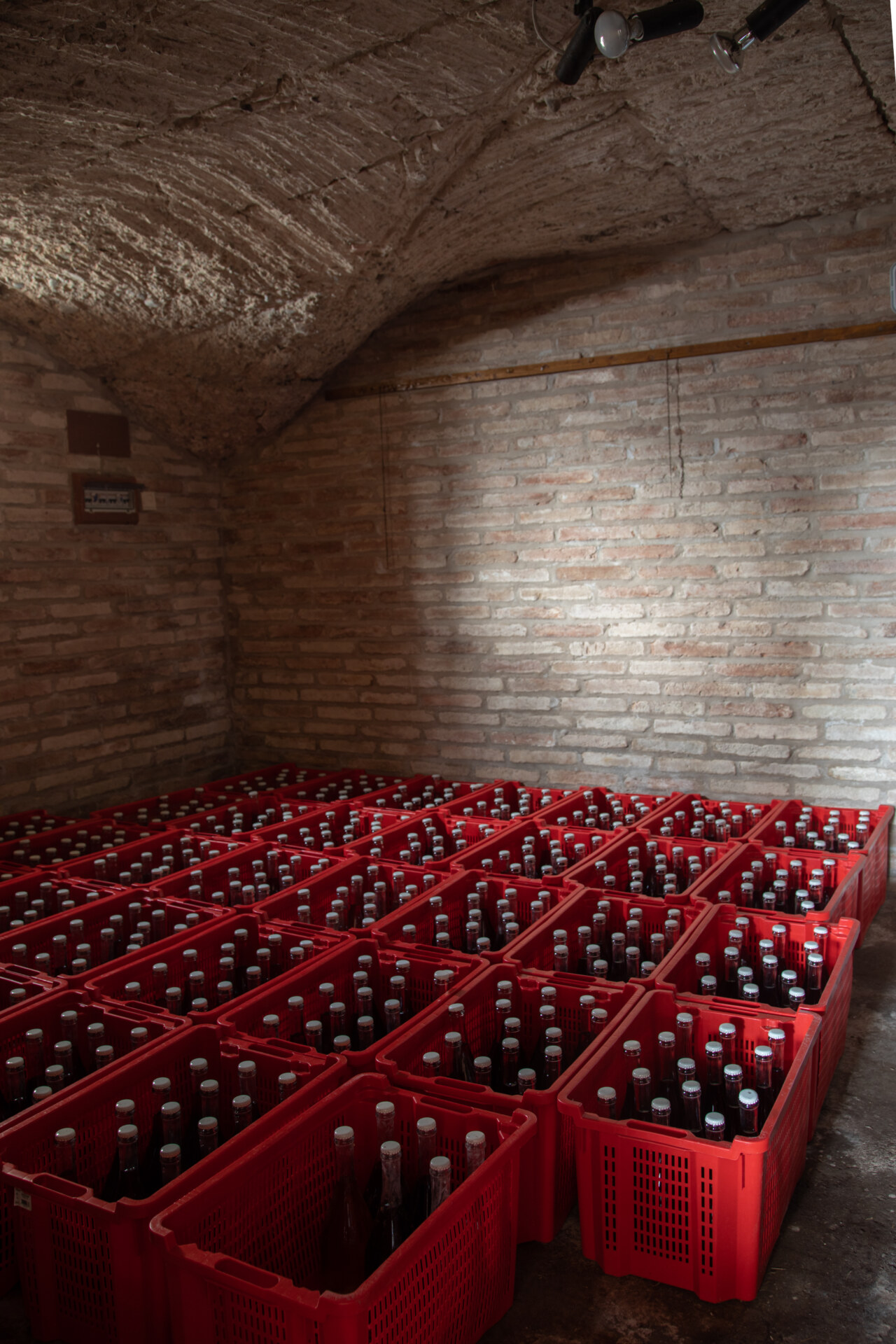
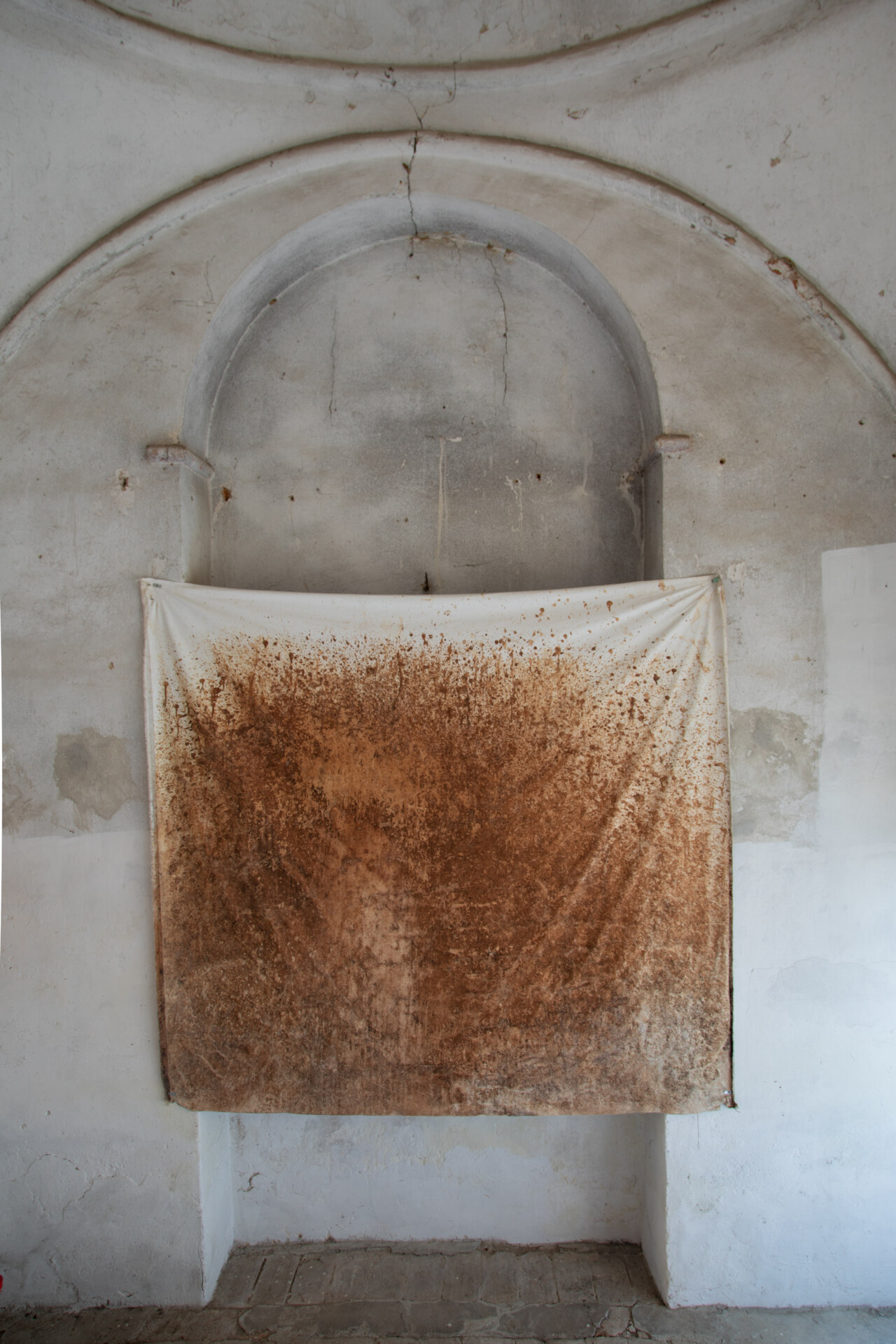
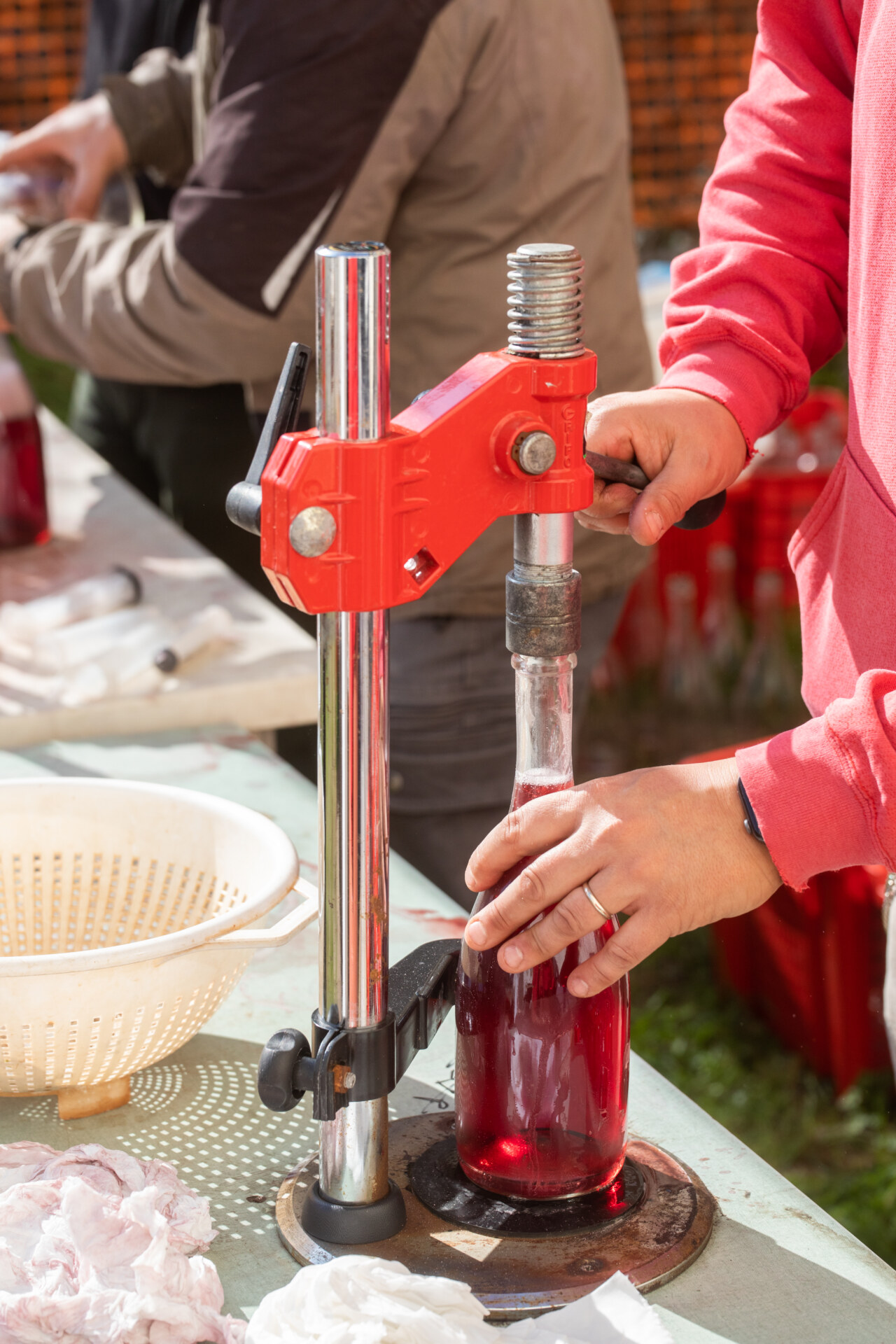
Siro Petracchi:
“Squashed like onions, elongated like pears, yellow like lemons, purple like plums, or even variegated with stripes of multiple colors like the ‘Popone’, native to the island of Elba,” are just a few ways to describe the 200 varieties of figs Siro Petracchi grows in the hilltop hamlet of Montalbioli. In flavor, Siro explains, the figs range “from sweeter tastes, usually for green and yellow figs, to more acidic flavors, akin to strawberries, for figs with black peels.” Black figs are his favorites.
“‘Carmignano dà fichi’ (‘Carmignano gives figs’) is an epithet that was used to refer to my town in the past,” Petracchi tells us. “Having lived and grown up here since I was a child probably–or rather certainly–influenced the decision, at a certain point in my life, to open a farm.”
In Montalbioli, overlooking Florence and Prato, trees, vines, and figs have been historically grown, and Siro’s dad too had been cultivating a plot of land–a portion of which was dedicated to figs–for the past 30 years. “Among my lands and those of other landowners, I discovered more than 25 different cultivars of Ficus Carica [the fig], evidence of the incredible biodiversity of this species, which became a catalyst for me,” Siro recalls.
“I then tried to gather as much information as possible, searching for texts, studies, or paintings, which, fortunately, are not lacking due to the passion that the fig has stimulated in humans over the millennia,” he continues, calling out paintings like Giorgio Gallesio’s “Pomona Italiana” and Bartolomeo Bimbi’s “I Fichi”, the latter of which is preserved in the Medici Villa di Poggio a Caiano, 15th-century palace that Siro can see every day from his fields. These artworks confirmed that there were dozens and dozens of cultivars beyond the “Dottato” variety, the most well-known and the most grown, to make Carmignano’s traditional dried figs.
As for the rarest fig, Siro points to the “legendary” Fico Fetifero, also known as the Fico Dall’Osso, which, in its original form, has most likely disappeared. First described by famed 19th-century Italian botanist Giorgio Gallesio, each fig is made up of two bulbous rounds with a bi-colored pulp.
“The extraordinary biodiversity of the fig is linked to the possibility of infinite varieties emerging from the germination of seeds, leading to characteristics that may even differ from those of the parent plant,” he elucidates. Which is why he’s also discovered varieties that have not been described in any text. When he comes across varieties like these, Siro preserves them by propagation through root cutting.
Siro is unsurprisingly a pro at knowing which figs work best for which preparation: some are eaten fresh, some dried, some transformed into jams or, a product he personally developed, fig nectar. You can visit his orchards, and taste his figs, during the summer months.
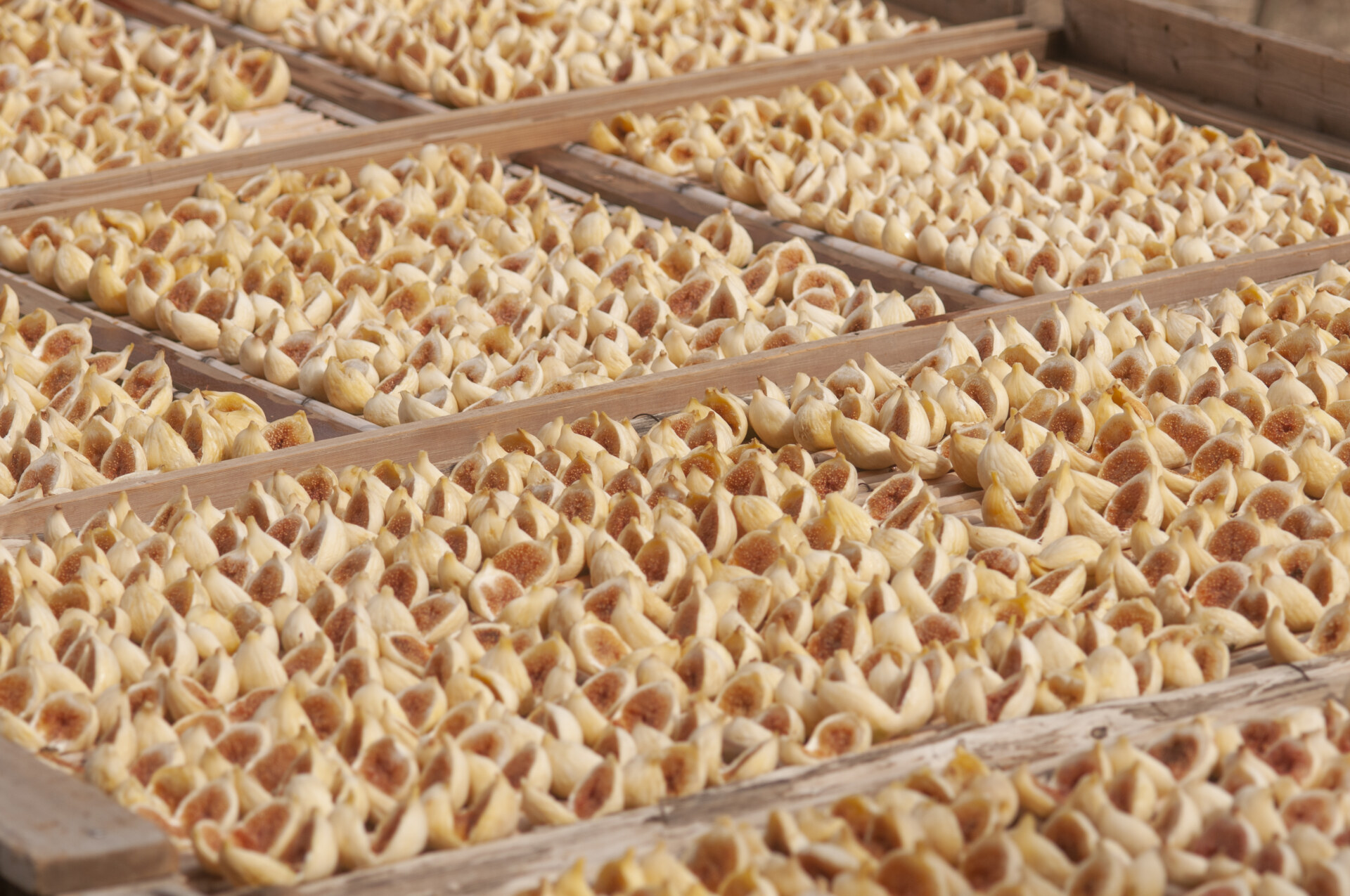
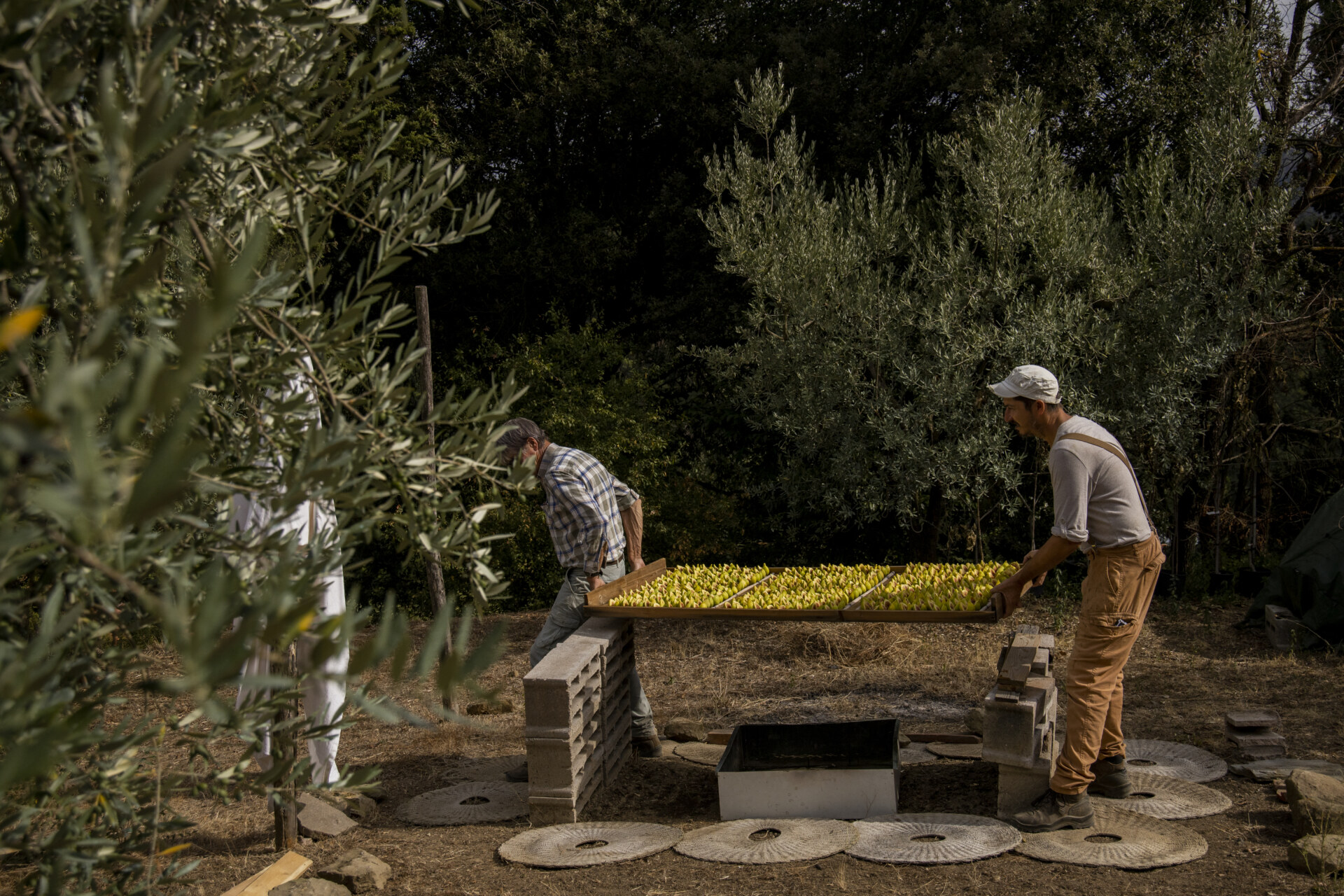
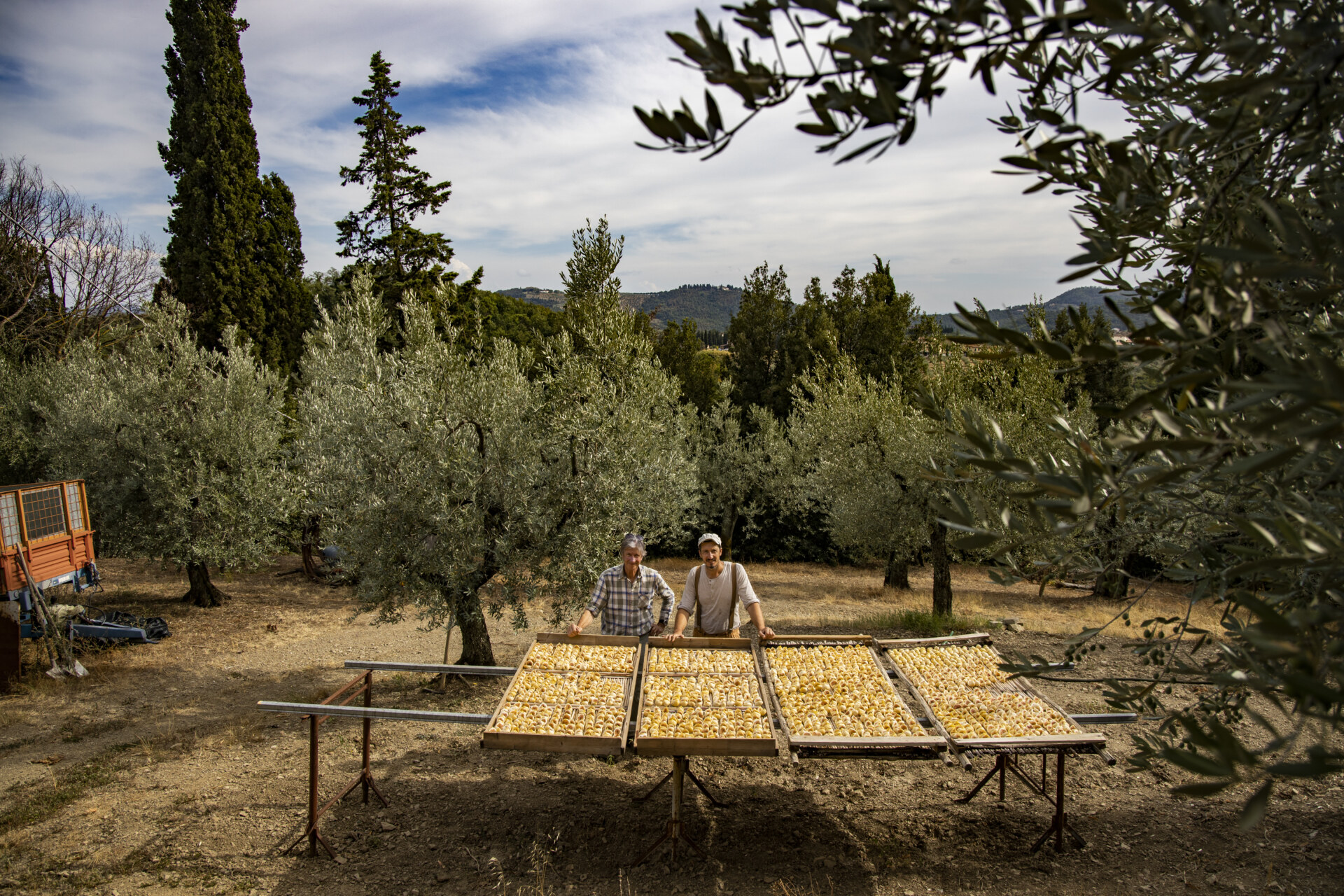
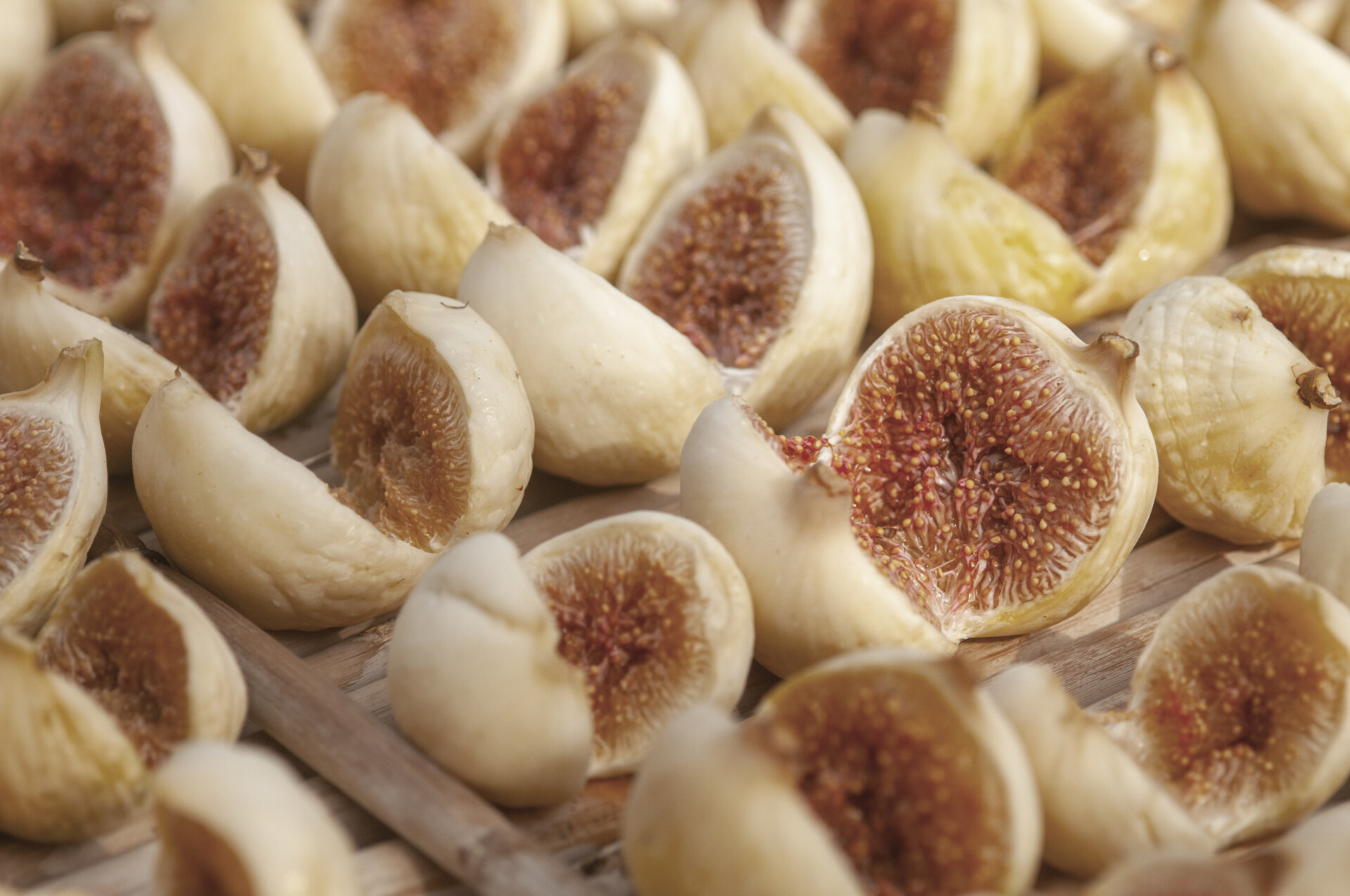
Photography by Dario Garofalo

